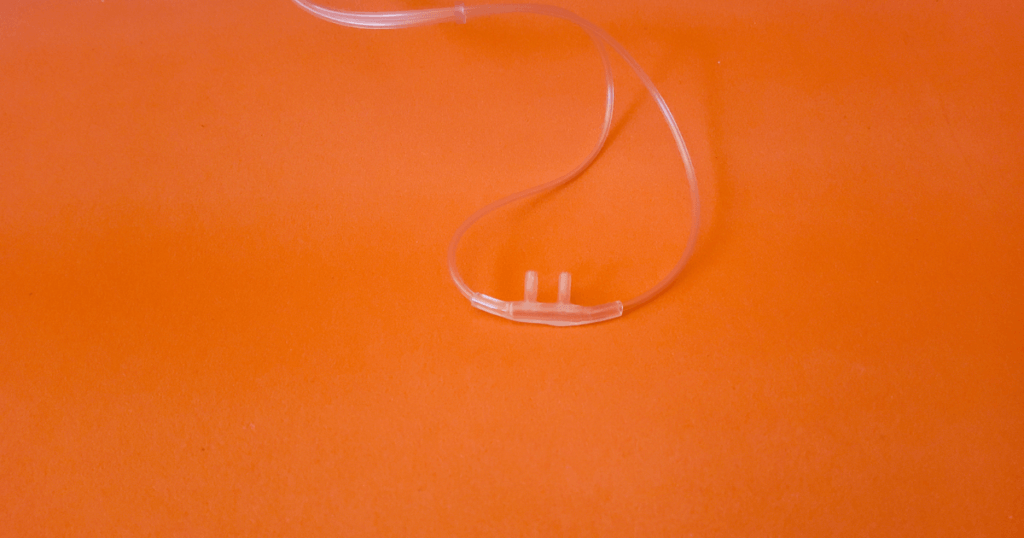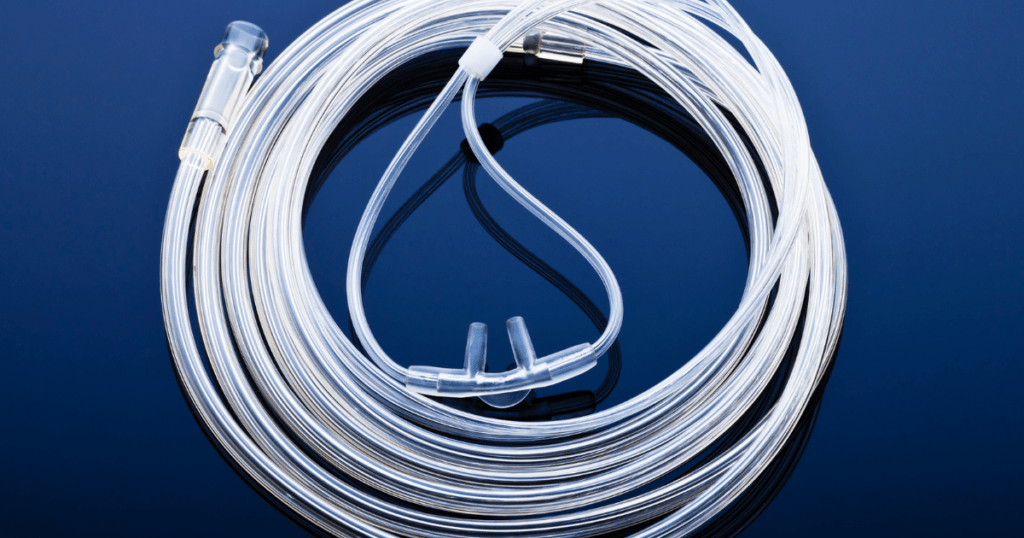Using an oxygen cannula is an essential part of oxygen therapy. Knowing how often the cannula should be changed is crucial to ensure safety and effectiveness.
How Often Should the Oxygen Cannula Be Changed? The general rule is to change it every 2 to 4 weeks.
Dirt and bacteria can build up on the tubing over time. Changing the cannula regularly helps prevent infections and ensures you get the best oxygen flow.
Replacing the cannula on schedule is a simple step, but it makes a significant difference.
How Often Should Oxygen Cannula Be Changed? Key Takeaways
- Change the oxygen cannula every 2 to 4 weeks.
- Regular changing prevents dirt and bacteria build-up.
- Timely replacement improves safety and oxygen flow.

Understanding Oxygen Cannula and Therapy
Oxygen cannulas are a key part of oxygen therapy. They help you get the oxygen your body needs if you have breathing problems.
Basics of Oxygen Therapy
Oxygen therapy is used when the body can’t get enough oxygen on its own. This is common in lung diseases like COPD, pulmonary fibrosis, asthma, and pneumonia.
Oxygen can come from different sources like an oxygen concentrator, oxygen tank, or portable oxygen concentrator.
Your healthcare provider will decide how much oxygen you need. They will also recommend the type of oxygen system best for you.
This therapy helps improve your quality of life by reducing symptoms like difficulty breathing.
Role of Nasal Cannula in Oxygen Delivery
A nasal cannula is a flexible plastic tube placed in your nostrils. It delivers a steady flow of oxygen directly to your lungs. This method is less intrusive compared to other oxygen delivery systems.
Nasal cannulas are often used in both hospitals and at home. They are especially helpful for people with chronic conditions like COPD, sleep apnea, or heart failure.
The cannula connects to an oxygen source, such as a concentrator or oxygen tank, through tubing.
Your doctor will guide you on how to use and care for the cannula. Proper usage ensures effective oxygen delivery and reduces the risk of infections.

Maintenance and Change Guidelines
Regular maintenance and timely changes of your oxygen cannula are crucial for hygiene and effectiveness. Proper cleaning can extend its life, but regular replacement is necessary to avoid irritation and bacterial growth.
When to Change Your Cannula
You should change your oxygen cannula every two weeks. If you notice the tubing becoming stiff and discolored or it starts to irritate your nasal passages, you should change it immediately.
The prongs should fit comfortably in your nostrils without causing sores or discomfort around your ears and chin.
Some people may need to change their cannula more often, especially if they have respiratory infections or use oxygen continuously.
Always keep extra cannulas on hand to avoid interruptions in your oxygen therapy.
How to Clean and Maintain Your Equipment
To clean your oxygen cannula, disconnect it from the oxygen source. Use a solution of warm water and mild dish soap to wash the tubing and prongs.
Gently scrub to remove any build-up. Rinse thoroughly with clean water and allow it to air dry completely.
For deeper disinfection, use a mixture of one part white vinegar and three parts water.
Soak the tubing for about 30 minutes, then rinse and dry as usual.
Cleaning your cannula regularly helps maintain the material and prevents infections.
Be sure also to check your extension tubing periodically and clean or change it as needed.

Safety and Best Practices
Changing your oxygen cannula regularly is crucial for maintaining hygiene and avoiding potential health issues.
Preventing Infections and Complications
To prevent infections, the cannula and other oxygen equipment should be cleaned often. Bacteria can build up on equipment, leading to health risks.
Use disinfectant solutions recommended by your supplier to keep everything clean.
Avoid using alcohol-based cleaners because they can damage the cannula material.
Change the cannula as soon as it looks soiled, discolored, or stiff. If you live in a moist or dusty environment, you may need to change it more frequently to keep it clean.
Check for signs of complications, such as nosebleeds or irritation. These issues may indicate that your cannula needs to be changed or that you should consult your healthcare provider.
Using a humidifier can help if your nasal passages are too dry.
Oxygen Equipment Safety Tips
When using oxygen equipment, it’s essential to practice good safety habits.
Oxygen is very flammable, so keep far away from open flames and heat sources. Avoid smoking near the equipment.
Ensure your equipment is in good condition and follows the manufacturers’ guidelines.
Place your oxygen equipment where it won’t easily tip over, and keep it away from children and pets.
In case of a power outage, having a backup plan is important.
Talk to your supplier about battery-operated solutions to ensure continuous oxygen supply.
Ensure all cables are well-maintained and that there’s no dust accumulation that could cause malfunctions.
Always stay in touch with your healthcare provider and oxygen supplier for support and replacement supplies.

Choosing the Right Cannula and Accessories
Picking the proper cannula and ensuring you have the right accessories can improve your comfort and oxygen therapy’s effectiveness.
Selecting a Cannula for Your Needs
When selecting a cannula, it is important to consider your flow rate needs.
Low-flow cannulas work well for oxygen flow rates up to 6 liters per minute. You might need high-flow nasal cannulas or an oxygen mask for higher flow rates.
High-flow nasal cannulas can deliver up to 60 liters per minute. This is suitable for patients needing more oxygen.
They provide heated and humidified oxygen, which can be more comfortable for long-term use.
Also, consider the material of the cannula. Soft, flexible cannulas reduce skin irritation and increase comfort.
If you require supplemental oxygen for a significant part of the day, choose a cannula that allows good mobility and performance.
Using Humidifiers and Additional Accessories
Humidifiers add moisture to the oxygen, reducing dryness in your nose and throat. This is especially important with high flow rates.
Using a humidifier requires water, so ensure you keep it filled and clean.
Humidified and heated oxygen can make breathing easier and prevent irritation, especially if you are on supplemental oxygen therapy for many hours a day.
Consider using oxygen tubing and extension tubing to allow more freedom to move around, improving your quality of life.
Portable oxygen units can also be essential for maintaining mobility while receiving oxygen therapy. This helps you keep active and participate in daily activities.

Wrapping Up
Changing your oxygen cannula is important for hygiene.
Follow medical advice for your replacement schedule. Generally, every 1-2 weeks is good practice.
- Signs to Change:
- If it looks dirty.
- If it feels uncomfortable.
- If you notice any odors.
Proper care keeps your equipment clean and safe.
Always consult your healthcare provider for personal advice. They know your specific needs.
Frequently Asked Questions
Changing your oxygen cannula and tubing regularly is important for safety and effectiveness. Below are specific answers regarding recommended intervals, differences in tubing materials, and risks associated with infrequent changes.
What are the recommended intervals for changing oxygen tubing in a healthcare facility?
Healthcare facilities generally recommend changing oxygen tubing every 7-14 days. Following the facility’s guidelines is crucial to ensuring patient safety and the proper function of the oxygen delivery system.
Is there a difference in replacement frequency between green and clear oxygen tubing?
Yes, there is a difference. Green oxygen tubing is typically more resistant to kinking and may last longer. Clear oxygen tubing might require more frequent changes due to less resistance and increased likelihood of kinks.
What are the risks of not replacing oxygen tubing regularly?
Not replacing oxygen tubing regularly can lead to decreased oxygen delivery, increased risk of infections, and potential blockages. This can compromise the effectiveness of the therapy and pose health risks.
